NVIDIA’s GeForce GTX 480 and GTX 470: 6 Months Late, Was It Worth the Wait?
by Ryan Smith on March 26, 2010 7:00 PM EST- Posted in
- GPUs
Image Quality & AA
When it comes to image quality, the big news from NVIDIA for Fermi is what NVIDIA has done in terms of anti-aliasing of fake geometry such as billboards. For dealing with such fake geometry, Fermi has several new tricks.
The first is the ability to use coverage samples from CSAA to do additional sampling of billboards that allow Alpha To Coverage sampling to fake anti-alias the fake geometry. With the additional samples afforded by CSAA in this mode, the Fermi can generate additional transparency levels that allow the billboards to better blend in as properly anti-aliased geometry would.
The second change is a new CSAA mode: 32x. 32x is designed to go hand-in-hand with the CSAA Alpha To Coverage changes by generating an additional 8 coverage samples over 16xQ mode for a total of 32 samples and giving a total of 63 possible levels of transparency on fake geometry using Alpha To Coverage.
In practice these first two changes haven’t had the effect we were hoping for. Coming from CES we thought this would greatly improve NVIDIA’s ability to anti-alias fake geometry using cheap multisampling techniques, but apparently Age of Conan is really the only game that greatly benefits from this. The ultimate solution is for more developers of DX10+ applications to enable Alpha To Coverage so that anyone’s MSAA hardware can anti-alias their fake geometry, but we’re not there yet.
So it’s the third and final change that’s the most interesting. NVIDIA has added a new Transparency Supersampling (TrSS) mode for Fermi (ed: and GT240) that picks up where the old one left off. Their previous TrSS mode only worked on DX9 titles, which meant that users had few choices for anti-aliasing fake geometry under DX10 games. This new TrSS mode works under DX10, it’s as simple as that.
So why is this a big deal? Because a lot of DX10 games have bad aliasing of fake geometry, including some very popular ones. Under Crysis in DX10 mode for example you can’t currently anti-alias the foliage, and even brand-new games such as Battlefield: Bad Company 2 suffer from aliasing. NVIDIA’s new TrSS mode fixes all of this.

Bad Company 2 DX11 Without Transparency Supersampling
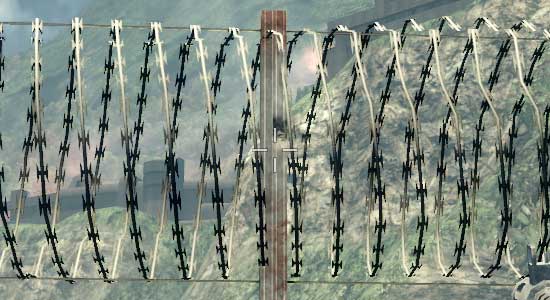
Bad Company 2 DX11 With Transparency Supersampling
The bad news is that it’s not quite complete. Oh as you’ll see in our screenshots it works, but the performance hit is severe. It’s currently super-sampling too much, resulting in massive performance drops. NVIDIA is telling us that this should be fixed next month, at which time the performance hit should be similar to that of the old TrSS mode under DX9. We’ve gone ahead and taken screenshots and benchmarks of the current implementation, but keep in mind that performance should be greatly improving next month.
So with that said, let’s look at the screenshots.

| NVIDIA GeForce GTX 480 | NVIDIA GeForce GTX 285 | ATI Radeon HD 5870 | ATI Radeon HD 4890 |
| 0x | 0x | 0x | 0x |
| 2x | 2x | 2x | 2x |
| 4x | 4x | 4x | 4x |
| 8xQ | 8xQ | 8x | 8x |
| 16xQ | 16xQ | DX9: 4x | DX9: 4x |
| 32x | DX9: 4x | DX9: 4x + AAA | DX9: 4x + AAA |
| 4x + TrSS 4x | DX9: 4x + TrSS | DX9: 4x + SSAA | |
| DX9: 4x | |||
| DX9: 4x + TrSS |
With the exception of NVIDIA’s new TrSS mode, very little has changed. Under DX10 all of the cards produce a very similar image. Furthermore once you reach 4x MSAA, each card producing a near-perfect image. NVIDIA’s new TrSS mode is the only standout for DX10.
We’ve also include a few DX9 shots, although we are in the process of moving away from DX9. This allows us to showcase NVIDIA’s old TrSS mode, along with AMD’s Adapative AA and Super-Sample AA modes. Note how both TrSS and AAA do a solid job of anti-aliasing the foliage, which makes it all the more a shame that they haven’t been available under DX10.
When it comes to performance, keep in mind that both AMD and NVIDIA have been trying to improve their 8x MSAA performance. When we reviewed the Radeon 5870 back in September we found that AMD’s 8x MSAA performance was virtually unchanged, and 6 months later that still holds true. The performance hit moving from 4x MSAA to 8x MSAA on both Radeon cards is roughly 13%. NVIDIA on the other hand took a stiffer penalty under DX10 for the GTX 285, where there it fell by 25%. But now with NVIDIA’s 8x MSAA performance improvements for Fermi, that gap has been closed. The performance penalty for moving to 8x MSAA over 4x MSAA is only 12%, putting it right up there with the Radeon cards in this respect. With the GTX 480, NVIDIA can now do 8x MSAA for as cheap as AMD has been able to
Meanwhile we can see the significant performance hit on the GTX 480 for enabling the new TrSS mode under DX10. If NVIDIA really can improve the performance of this mode to near-DX9 levels, then they are going to have a very interesting AA option on their hands.
Last but not least, there’s anisotropic filtering quality. With the Radeon 5870 we saw AMD implement true angle-independent AF and we’ve been wondering whether we would see this from NVIDIA. The answer is no: NVIDIA’s AF quality remains unchanged from the GTX200 series. In this case that’s not necessarily a bad thing; NVIDIA already had great AF even if it was angle-dependant. More to the point, we have yet to find a game where the difference between AMD and NVIDIA’s AF modes have been noticeable; so technically AMD’s AF modes are better, but it’s not enough that it makes a practical difference
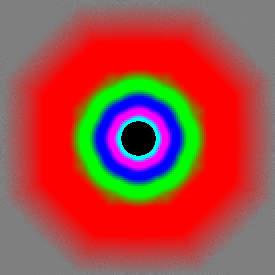
GeForce GTX 480

GeForce GTX 285
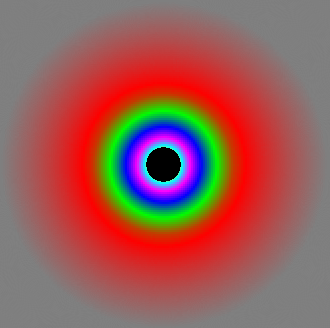
Radeon 5870


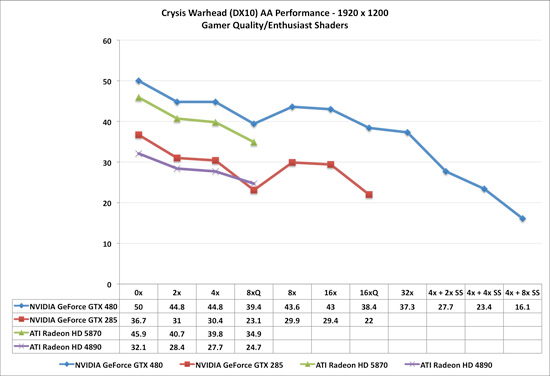
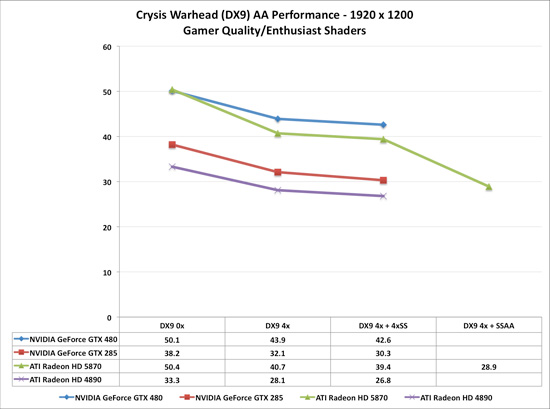








196 Comments
View All Comments
ol1bit - Thursday, April 1, 2010 - link
I thought it was a fare review. They talked about the heat issues, etc.You can't compare a 2 GPU card to a single GPU card. If they ever make a 2 core GF100, I'm sure Anandtech will do a review.
IceDread - Tuesday, April 6, 2010 - link
You are wrong. You can and you should compare single gpu cards with multi gpu cards. It does not matter if a card has one or 30 gpu's on the card. It's the performance / price that matters.These nvidia cards are very expensive in performance / price compared to the ATI cards, simple as that. It's obvious that nvidia dropped the ball with their new flagship. You even need 2 cards to be able to use 3 screens.
This is bad for us customers, we are not getting any price pressure at all. These nvidia cards does not improve the market since they can not compete with the ATI card, only nvidia fans will purchase these cards or possibly some working with graphics.
I hope nvidia will do better with their next series or cards and I hope that won't take to long because ATI will most likely release a new series in half a year or so.
xxtypersxx - Sunday, March 28, 2010 - link
I will be interested in seeing the performance gains that will likely come from revised Nvidia drivers in a month or two. In some of the tests the gtx470 is trading blows with the gtx285 despite having nearly double the compute power...I think there is a lot of room for optimization.I am no fanboy and even owned a 4850 for a while, but Nvidia's drivers have always been a big decision factor for me. I don't get any of the random issues that were common on catalyst and aside from the occasional hiccup (196.67 G92 fan bug) I don't worry about upgrades breaking things. I admit I don't know if all the 5xxx series driver issues have been fixed yet but I do look forward to driver parity, until then I think raw performance is only part of the equation.
GourdFreeMan - Sunday, March 28, 2010 - link
Ryan, have you checked performance and/or clocks to see if any of the cards you are testing are throttling under FurMark? I recall you mentioning in your 58xx review that ATi cards can throttle under FurMark to prevent damage, and while most of the power numbers look normal, I notice a few of the cards are consuming less power under FurMark than Crysis, unlike the majority of the cards which consume considerably more power running FurMark than Crysis...MojaMonkey - Sunday, March 28, 2010 - link
I can turn off one light in my house and remove the power consumption difference between the GTX480 and the 5870.I thought this was an enthusiast site?
I lol irl when people talk about saving 100 watts and buying a 5870. So saving 100 watts but building a 700 watt system? Are you saving the planet or something?
I think nVidia is smart, if you fold or use cuda or need real time 3d performance from a quadro you will buy this card. That probably is a large enough market for a niche high end product like this.
PS: 5870 is the best gaming card for the money!
Paladin1211 - Sunday, March 28, 2010 - link
No, the 5850 is.p/s: I misclicked the Report instead of Reply button, so pls ignore it T_T
kallogan - Sunday, March 28, 2010 - link
Seriously i wonder who'd want gpus that power angry, noisy and hot...Nvidia is out both on mobile and desktop market...The only pro for Nvidia i can see is the 3D support.beginner99 - Sunday, March 28, 2010 - link
This is kind of bad for consumers. 0 pressure on ATI to do anything from lower price to anything else. they can just lay back and work on the next gen.Well, that at least made my decision easy. build now or wait for sandybridge. I will wait. hoepfully gpu marekt will be nicer then too (hard to be worse actually).
C5Rftw - Sunday, March 28, 2010 - link
I was waiting for the fermi cards to come out before my next high end build( looking for price drops), but I actually did not expect this card to be this fast. The GTX480 is ~15% faster than the 5870, but for $100 more, and it is just gonna be a Nvidia loyal card, and the 5870 will probably drop just a little if at all.. The 5850 and and 5830 should drop $25-50, hopefully more(2x5850 at ~250$ each would be FTW). Now, would I like to have a fermi?, well yeah for sure, but I would much rather have a 5870 and down the road add another. A GTX 480 uses the same, if not more power than (2) 5870's. Now this reminds me of the last gen of the P4's. or as we know em, the Preshots. Basically, Nvidia's idea of a huge chip approach, with yes impressive performance, was just the wrong approach. I mean, their next-gen, if based on this same "doubling" SPs, cuda cores, would draw 300w+ easily and almost require water cooling because the next TSMC process is going to be 32nm and that will not allow them to "cut the chip in half." ATI's theory started with the 4000 series has proven to be a much better/efficient design. I think they could make a 6870 using 40nm TSMC right now, but ofcourse it would be a hot chip. Now when they get the 32 TSMC FABs running, Nvidia has got to re-design their chips.. And with how hot the GTX 480 is, I dont see how they could make a GTX 495. Also, the 5890 is right around the corner and that should give the final punch to KO Nvidia in this GPU generation. On a side note, Thank " " that there is some healthy competion or AMD might pull what Nvidia did and rebrand the 8800 5 or 6 times.Belard - Sunday, March 28, 2010 - link
Keep in mind, the GeForce 480 (GTX means nothing, see any GTX210 or GT 285?) is already the most power hungry card on the market, just under 300watts under full load.... if the GF480 had all 512 Cuda Cores running and clocked higher... the card will easily surpass 300watts!This in turn means MORE heat, more power, more noise. There are videos on the 480/470s & ATI cards... the 480's fan is running very fast and loud to keep it under 100c, about 2~3 times hotter than a typical CPU.
We will see the ATI 6000 series on 40nm, but it may not be with TSMC.
If the upcoming 5890 is 15% faster and can sell for $400~450, that would put some hurt on the GF480.
Not sure how/why ATI would do re-branding. The 4670 is almost like a 3870, but is easily a more advanced and cheaper GPU. The bottom end GPUs have all changed. 2400 / 3450, 4350, 5450 - all different.
Nvidia has been doing re-branding for quite a long time. The GF2mx was re-branded as the GF2MX 400 (These were bottom end $150~190 cards in 2001) and then for some bone-head reason, during the GF6 era - they brought back the GF2MX but added DX8. Huh? Add a function to an OLD bottom end GPU?
The GF2-TI came out when GF3-TI series was launched... they wanted "TI" branding. The GF2-TI was a rebranded GF2-Pro with a slight clock upgrade.
Then came the first big-branding/feature fiasco with Nvidia. The GF8 was the first DX8 cards. Then the GF 4 series came out. The GF4ti were the high end models. But the MX series were nothing more than GF2 (DX7) with optional DVI... to take care of the low end and shove the letter names to the front.
GF4 mx420 = GF2mx, but a bit slower.
GF4 mx440 = GF2 Pro/TI
GF4 mx460 = ... faster DX7 card, but it was about $20~35 cheaper than the GF4-TI4200, a DX8 card. The Ti4200 was a #1 seller at about $200. Some of the 440se & 8x models may have 64 or 128bit RAM... ugh.
Then they had fun with the TI series when AGP 8x came out... NEW models! Either thou the cards couldn't max out the AGP 4x bus. Even the future ATI 9800Pro only ran 1~3% faster with AGP 8x.
GF4 Ti 4200 > GF4 Ti 4200 8x
GF4 Ti 4400 > GF4 Ti 4800 SE
GF4 Ti 4600 > GF4 Ti 4800
Yep, same GPUs... new names. Some people would upgrade to nothing or worse. Some even went from the 4600 to the 4800SE which was a downgrade!
GF5 5500 = 5200
Since the GF5... er "FX" series, Nvidia kept the DX# and feature set within the series. All GF5 cards are DX9.
But the 5200s were a joke. By the time they hit the market at $120, the Ti4200s were also $120 and the 4mx were reduced to $30~60. But the 5200 was HALF the performance of a 4200. People actually thought they were upgrading... returns happened.
Funny thing once. A person bought a "5200" at walmart and was confused by the POST display of "4200". Luckily he had posted to us on the interent. We laughed our butts off...! What happened? Batch & switch... someone bought a 5200, took it home - switched cards, took it back to Walmart for a refund. hey, its usually a brick or a dead card, etc. he got used card, but a much better product.
Like the ATI 5450 is too slow for gaming today for DX11, the GF5200 was horrible back in 2003 for DX9! The 5200 is still sold today, the only thing left.
Pretty much the entire GF5 series was utter garbage. 4 versions of the GF5600 ($150~200) were slower than the previous $100 Ti 4200. It was sick. This allowed ATI to gain respect and marketshare with their ATI 9600 & 9700 cards. The GF 5700 series (2 out of 5 types) were good Ti4200 replacements. The 5900 went up against the ATI 9800. I've owned both.
Since then, ATI pretty much had the upper hand in performance throughout the GF6 & GF7 era. AMD buys out ATI, then the GF8 and core2 wipes out ATI/AMD with faster products.
While ATI had the faster cards during DX9.0c (really MS? Couldn't make 6.1, 6.2?) era over the GF6/7... Nvidia *HAD* the lower end market. The GF6600 and 7600GT were $150~200 products... ATI products in that price range were either too slow or cost too much.
With GF 8800 & 8600s, ATI had lost high & mid-range markets. The HD 2000 series = too expensive, too hot and not fast enough... (sound familiar). The ATI 3000 series brought ATI back to competitive position where it counted. Meanwhile, Nvidia milked the G92~96 for the past 2+ years. They are code-name & model number crazy happy.
As long as ATI continues doing engineering and management this way, nVidia will continue to be in trouble for a long time unless they get their act together or count on the server market to stay in business.
End of short history lesson :0